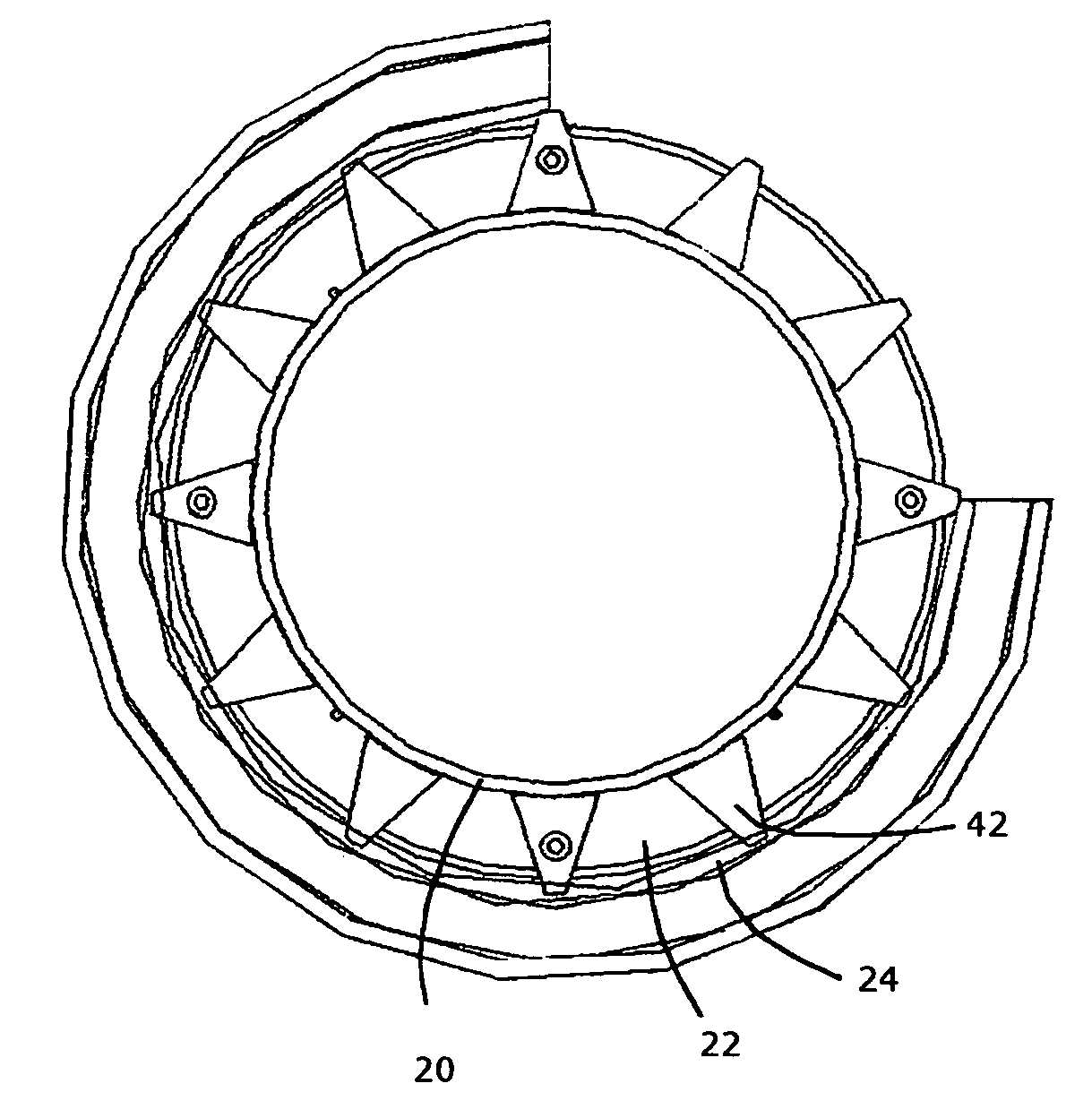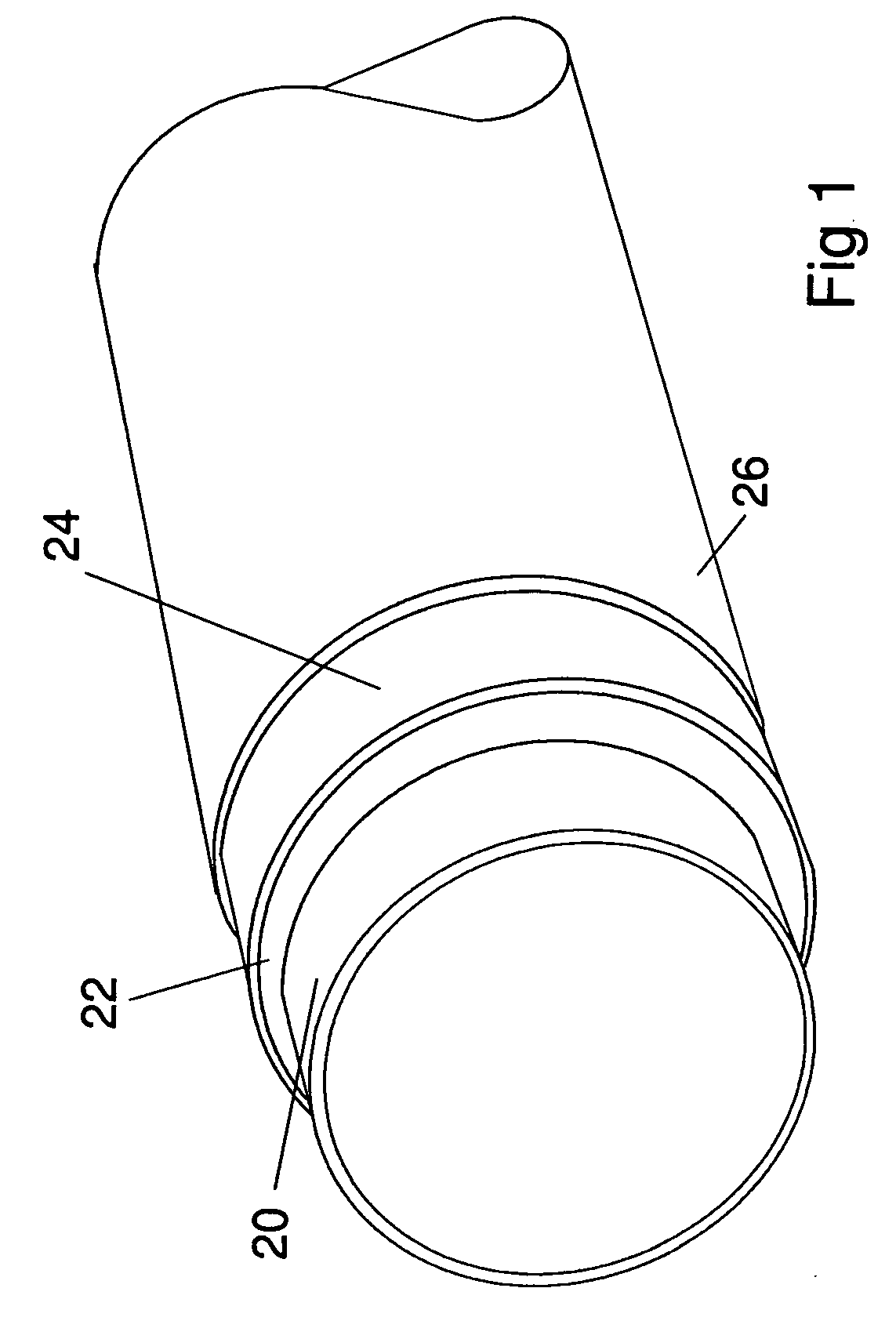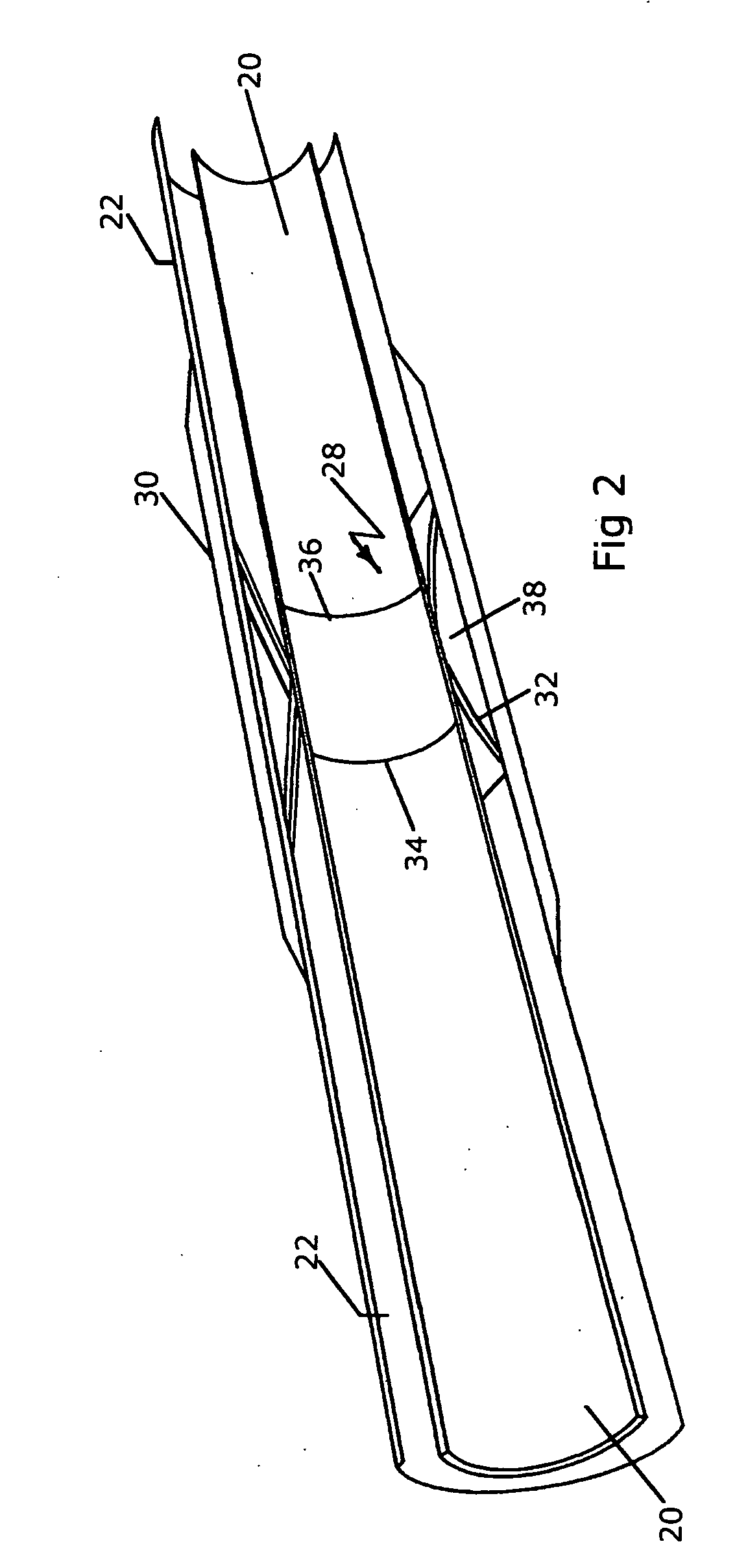Advance instrumentation methods for pipes and conduits transporting cryogenic materials
a technology of cryogenic materials and instrumentation methods, which is applied in the direction of liquid handling, container discharging methods, packaging goods, etc., can solve the problems of short-distance loading and offloading hoses, limited insulation, and high operating and maintenance costs of such systems
- Summary
- Abstract
- Description
- Claims
- Application Information
AI Technical Summary
Benefits of technology
Problems solved by technology
Method used
Image
Examples
Embodiment Construction
[0034]The subject pipeline technology uses a highly efficient thermal nanoporous insulation in the annular space between the inner and outer pipes and this material is generally kept in an ambient pressure environment as a result of the space being sealed by bulkheads so this environment is maintained. Where leak detection is employed, the pressure will be slightly above ambient pressure. As shown in FIG. 1, the internal cryogenic product pipe for LNG vapor or LPG service is a rigid pipe such as, by way of example the ASTM 333 Grade 8, 9% nickel steel pipe 20. This is surrounded by a nanoporous insulation material 22 which fill the space between the external casing pipe 24, which may be a carbon steel pipe with FBE corrosion coating, and the internal pipe 20. The insulation is typically a flexible aerogel. There is no need for a water stop commonly required in common insulation systems, as the aerogel insulation is contained within a Tyvek™ or similar outer wrapping and the aerogel ...
PUM
 Login to View More
Login to View More Abstract
Description
Claims
Application Information
 Login to View More
Login to View More - R&D
- Intellectual Property
- Life Sciences
- Materials
- Tech Scout
- Unparalleled Data Quality
- Higher Quality Content
- 60% Fewer Hallucinations
Browse by: Latest US Patents, China's latest patents, Technical Efficacy Thesaurus, Application Domain, Technology Topic, Popular Technical Reports.
© 2025 PatSnap. All rights reserved.Legal|Privacy policy|Modern Slavery Act Transparency Statement|Sitemap|About US| Contact US: help@patsnap.com



